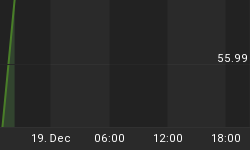Like the earmark hidden so deep inside a new appropriations bill committee report that it takes a magnifying glass to find, so too the lengths we apparently need to go in figuring out the degree of money supply growth in the US.
But is it really such a mystery?
The US Federal Reserve abolished the widest measure of money supply, M3, in 2006, arguing it didn't provide significantly useful information and too costly to maintain.
Perhaps a look to China can provide some clues.
China maintains a currency peg to the US dollar, i.e., while the peg is in place -- as it is currently and has been for years, but for minor appreciation recently -- the two currencies are mirror images of one another, akin to a fighter jet locked onto another while in pursuit. Every move must be met with an equal reactionary move to preserve the lock.
The same concept applies with a currency peg.
In a Bloomberg story from this past February 14th titled "China's Money Supply Growth Surges Ahead of Holiday," we are told that China's M2, the broadest measure, rose 18.9 percent to 41.78 trillion Yuan ($5.8 trillion) from a year earlier. This was slightly higher than prior growth targets of around 16 percent due to the holiday.
The same story tells us China's inflation rate was 6.5 percent in December, close to an 11-year high, because of rising food and fuel costs.
In a story published in July, 2006 by the China Daily newspaper titled "Money supply growth unlikely to slow" we were told that, "the ballooning forex reserve is a major factor behind the dynamic growth of the money supply," by Li Yongsen, an economist at Renmin University of China. "The central bank has to release new money to mop up the excess US dollars in the marketplace and enforce a floating band for the renminbi, which is driving up money supply growth," he said.
Fixing the value of a currency to that of another, usually one with low-inflation, is the approach that has historically been used by central banks to pursue price stability.
But as the above statistics prove, China has hardly achieved price stability by pegging to the US dollar.
Pegging a currency to another "obliges the central bank to limit money creation to levels comparable to those of the country to whose currency it is pegged. When credibly maintained, an exchange rate target can lower inflation expectations to the level prevailing in the anchor country. Experiences with fixed exchange rates, however, point to a number of drawbacks. A country that fixes its exchange rate surrenders control of its domestic monetary policy. It can neither respond to domestic shocks that are not felt by the anchor country nor avoid shocks transmitted by the anchor country," said then president of the Federal Reserve Bank of New York, William J. McDonough, in a speech before the Economic Club of New York in 1996.
So we ask again. How can there be negligible money supply growth in the US and 2-3% inflation, when China, a country with a pegged currency to the $US, is experiencing money supply growth in the mid-teens and 6.5% inflation in December?
If China has surrendered control of its money supply growth to that of the US, then wouldn't it follow that it is doing whatever the US Fed is doing with US money supply growth?
The answer should be obvious.
That is what the continued rise in the $US prices for precious metals and commodities is telling us.
Just like the continued rises in the prices for food and basic necessities in China should be telling the Chinese government and Chinese central bank that it might be time to do away with their antiquated policy of pegging to the $US.
The MurkyMarkets.com website by Christopher G Galakoutis is a running macroeconomic commentary on the state of the financial markets with emphasis on gold, silver, the currency markets and energy. Visitors to our new site are always welcome.
















